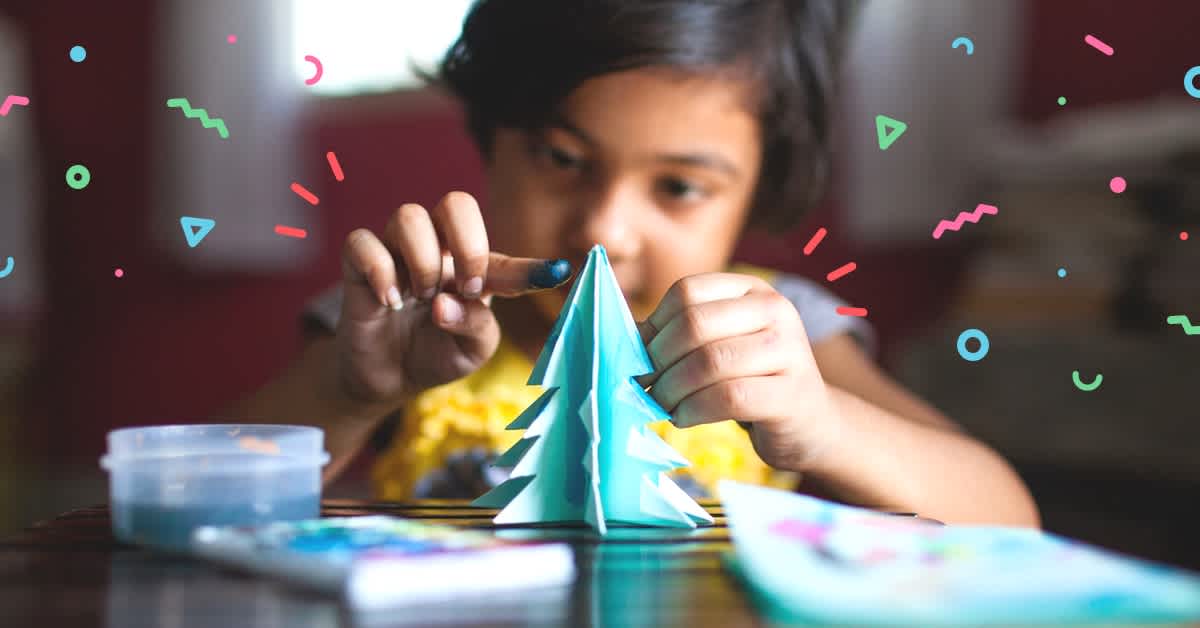
December is synonymous with end-of-year projects, performances, and parties, which leave many parents exhausted before the holidays even begin. Children, on the other hand, are unsurprisingly resilient and even buoyed by the freedom of not being in school.
Before adults have time to decompress, they are faced with a week or two of unscheduled winter break and the dreaded “I’m bored.” Fear not, as there are a slew of ways for children and their parents to happily pass the days into the new year. The key to success? Planning ahead.
The key to success? Planning ahead.
Early in my career as a parent, late in December days were accompanied with anxiety over how to fill the time with my young kids when I was without childcare. Over breakfast, I would frantically search for activities that accommodated a stroller and varying interests. Each night, I would count the days until it was time for them to return to school.
As my parenting strategies evolved, I adopted a practice that transformed my experience as a mother–I hung a calendar in the kitchen and paid extra attention to the days marked “No school.” Here are six ways to make this winter break your family’s best one yet.
1. Create a Calendar
A calendar is the single most important factor to having a fun break from school. Connect with the parents of your children’s friends to find out when they might be in town and coordinate free days for playdates.
Planning well in advance of the vacation also give parents and caregivers time to peruse online for nearby storytimes, classes and other kid-friendly events. Waiting until the last minute is a gamble and ultimately leaves parents feeling isolated and kids bored, particularly during the cold winter days.
2. Establish a Routine
Enlist participation from your children to create a routine in advance of the break so they know what to expect of the time off from school. You can together identify a general routine outlining daily activities–meals, chores, electronics, reading, free time–to promote independence. The night before, review plans like special outings or playdates that make the following day unique.
3. Run the Household and De-clutter
Time off from school is an opportunity to make even young children more aware of what it takes to run the household. The youngest children can wipe down a counter or dust a surface, while older siblings can run the vacuum and help make beds. Without the presence of after school responsibilities, like homework and sports practices, kids are freed up to help with menu planning, food shopping, and (the funnest) cooking.
Decluttering is also a great way to keep kids occupied. My family tackles one problem area per day, setting aside just one hour, right after breakfast before a fun, scheduled activity. We scour the games closet, arts-supply drawer, bookshelves, and dressers. To round out the ritual, the children participate in dropping their gently used goods to our local donation center.
4. Physical Play, Every Day
Set aside time each day to get outdoors for a run around. Visit a new playground or park. Dig out frisbees, footballs, jump ropes, and with certainty, get involved in the fun. Nothing delights my children more than when I try to sink a basketball (with very little success). During inclement weather, we play tag at home and make up silly rules to accommodate for the smaller indoor space.
5. Hit Your Local Library
Several decades ago, the public library was associated with silence and void of technology of any kind. Libraries of today, all across the country, are more akin to ever-evolving community centers offering storytime, family films, young adult book clubs and homework support. If you haven’t stepped foot into one in a few years, you don’t know what you are missing.
6. Solo Play
No amount of motivation and organization will fill every hour of every day, and nor should it. According to clinical psychologist and author, Dr. Laura Markham, “One of our biggest challenges as adults, and even as teenagers, is learning to manage our time well. So, it’s essential for children to have the experience of deciding for themselves how to use periods of unstructured time, or they’ll never learn to manage it.”
According to child experts, a 6-month-old may be content alone for five minutes; a 12-month-old for 15 minutes; an 18-month-old for about 15-20 minutes; up to 30 minutes at two years and jumping up from there. Markham adds that when children learn to read, the “Mom, I’m bored” excuse has fewer legs on which to stand.
What is critical to solo play lasting as long as possible is creating a scenario conducive to success: full bellies and released energy. My kids typically play alone right after a jaunt outdoors and a snack, and I have paints, coloring books, building elements, and favorite toys set up and ready to go.
Don’t worry, you got this.
Fabric exists to help young families master their money. Our articles abide by strict editorial standards.
Information provided is general and educational in nature, is not financial advice, and all products or services discussed may not be offered by Fabric by Gerber Life (“the Company”). The information is not intended to be, and should not be construed as, legal or tax advice. The Company does not provide legal or tax advice. Consult an attorney or tax advisor regarding your specific legal or tax situation. Laws of a specific state or laws relevant to a particular situation may affect the applicability, accuracy, or completeness of this information. Federal and state laws and regulations are complex and are subject to change. The Company makes no warranties with regard to the information or results obtained by its use. The Company disclaims any liability arising out of your use of, or reliance on, the information. The views and opinions of third-party content providers are solely those of the author and not Fabric by Gerber Life.

Written by
Mariko Zapf
Related Posts
Work, Life, Balanced
CFPs, Money Coaches and More: Which Financial Professional Is Right for You?
A financial professional can help you manage your money. What type of financial pro you need can depend on the kind of help you’re looking for.
By Jessica Sillers
Work, Life, Balanced
What Parents Need to Know About Taxes in 2025
Tax credits or deductions can help families lower taxes and keep more money to enjoy with your kids.
By Jessica Sillers
Work, Life, Balanced
Does Your Partner Lie About Money? Ways to Find—and Fix—Financial Infidelity
Financial infidelity, or being dishonest about money with your partner, can affect your finances and relationship. Spot unhealthy patterns and learn ways to build money habits that strengthen your bond.
By Jessica Sillers
Fabric Picks
Saving/Investing for Kids
How to Do 30 Days of Financial Self-Care as a Parent
Self-care comes in many forms, including how you handle your money. See how small steps may add up to help improve your financial well-being.
By Jessica Sillers
Life insurance
What to Do at the End of Your Life Insurance Term
Term life insurance, by definition, ends. Check that you’re ready for a smooth transition out of your policy, or take steps to continue the best coverage fit for you.
By Jessica Sillers
Saving/Investing for Kids
Investing Strategies for Beginners
Investing can be a sound strategy to help grow your finances over time. Start by identifying which strategy and account type works best for you.